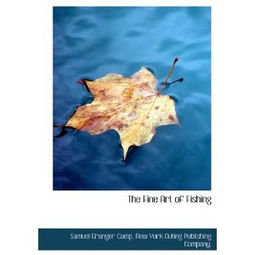Deep-Sea Hand Rod Fishing: Essential Techniques and Tips for a Rewarding Experience
Deep-sea hand rod fishing is an exhilarating and challenging pursuit that requires a blend of skill, patience, and a deep understanding of the ocean's depths. Whether you're a seasoned angler or a beginner looking to explore the vast and mysterious underwater world, mastering the art of deep-sea hand rod fishing can lead to some of the most rewarding catches of your life. In this article, we'll delve into the essential techniques and tips that will help you become a proficient deep-sea hand rod fisherman.
Understanding the Equipment

Before you can start fishing, it's crucial to understand the equipment you'll be using. A deep-sea hand rod is a specialized tool designed for catching fish in the deeper waters, typically ranging from 100 to 300 feet. Here's a breakdown of the key components:
Rod and Reel: The rod should be long and strong, capable of handling the weight of the fish you're targeting. The reel should be a sturdy, saltwater-resistant model with a good drag system.
Line: Use a heavy-duty monofilament or braided line that can withstand the pressure and weight of deep-sea fish. The line should be long enough to reach the depths you're targeting.
Sinkers: These are used to get your bait to the desired depth. The weight of the sinker will depend on the depth of the water and the current.
Hooks: Choose hooks that are appropriate for the type of fish you're targeting. Larger hooks are often used for deep-sea fishing due to the size of the potential catch.
Bait: The type of bait will vary depending on the species you're after. Common choices include squid, fish, and cut bait.
Techniques for Success
Choosing the Right Location: Research the areas where your target species are known to be. Use charts, maps, and local knowledge to find the best spots.
Understanding Currents and Tides: The movement of water in the ocean can greatly affect your fishing success. Understanding the currents and tides will help you predict where the fish are likely to be.
Adjusting Your Depth: Use a depth finder to monitor the depth of your line. Adjust your sinker weight and the amount of line you're using to reach the optimal depth for your target species.
Presenting Your Bait: The way you present your bait can make a significant difference. Experiment with different retrieves, such as slow-trolling, casting, or letting your bait drift naturally.
Reading the Bites: Learning to recognize the subtle signs of a bite is crucial. A sudden tap, a change in line tension, or a slight pull can indicate a fish is interested in your bait.
Handling the Fish: Once you've hooked a fish, it's important to handle it carefully. Keep the rod tip high to prevent the fish from pulling the hook free. Use a net to land the fish gently.
Safety First
Deep-sea fishing can be dangerous, so it's essential to prioritize safety:
Weather Awareness: Check the weather forecast before heading out and be prepared to cancel or delay your trip if conditions are unsafe.
Boat Safety: Ensure your boat is equipped with all necessary safety gear, including life jackets, flares, and a first aid kit.
Communication: Inform someone of your fishing plans, including your intended route and expected return time.
Sea Sickness: Take precautions to prevent sea sickness, such as taking medication or staying below deck during rough weather.
Conclusion
Deep-sea hand rod fishing is a rewarding but demanding activity that requires dedication and practice. By understanding the equipment, mastering the techniques, and prioritizing safety, you'll be well on your way to becoming a proficient deep-sea angler. Remember, the ocean is vast and full of surprises, so be prepared to adapt and learn as you go. Happy fishing!












